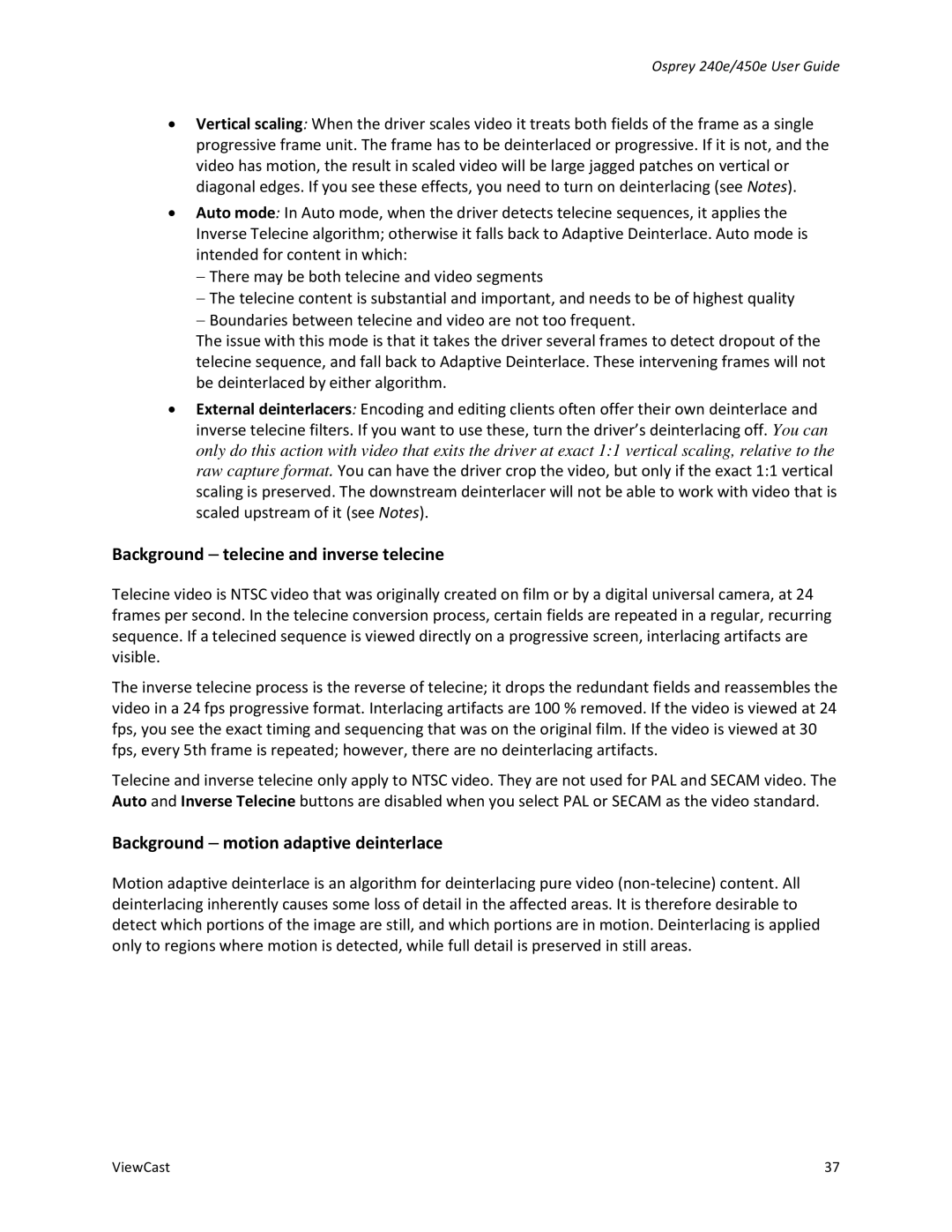Osprey 240e/450e User Guide
∙Vertical scaling: When the driver scales video it treats both fields of the frame as a single progressive frame unit. The frame has to be deinterlaced or progressive. If it is not, and the video has motion, the result in scaled video will be large jagged patches on vertical or diagonal edges. If you see these effects, you need to turn on deinterlacing (see Notes).
∙Auto mode: In Auto mode, when the driver detects telecine sequences, it applies the Inverse Telecine algorithm; otherwise it falls back to Adaptive Deinterlace. Auto mode is intended for content in which:
−There may be both telecine and video segments
−The telecine content is substantial and important, and needs to be of highest quality
−Boundaries between telecine and video are not too frequent.
The issue with this mode is that it takes the driver several frames to detect dropout of the telecine sequence, and fall back to Adaptive Deinterlace. These intervening frames will not be deinterlaced by either algorithm.
∙External deinterlacers: Encoding and editing clients often offer their own deinterlace and inverse telecine filters. If you want to use these, turn the driver’s deinterlacing off. You can only do this action with video that exits the driver at exact 1:1 vertical scaling, relative to the raw capture format. You can have the driver crop the video, but only if the exact 1:1 vertical scaling is preserved. The downstream deinterlacer will not be able to work with video that is scaled upstream of it (see Notes).
Background − telecine and inverse telecine
Telecine video is NTSC video that was originally created on film or by a digital universal camera, at 24 frames per second. In the telecine conversion process, certain fields are repeated in a regular, recurring sequence. If a telecined sequence is viewed directly on a progressive screen, interlacing artifacts are visible.
The inverse telecine process is the reverse of telecine; it drops the redundant fields and reassembles the video in a 24 fps progressive format. Interlacing artifacts are 100 % removed. If the video is viewed at 24 fps, you see the exact timing and sequencing that was on the original film. If the video is viewed at 30 fps, every 5th frame is repeated; however, there are no deinterlacing artifacts.
Telecine and inverse telecine only apply to NTSC video. They are not used for PAL and SECAM video. The Auto and Inverse Telecine buttons are disabled when you select PAL or SECAM as the video standard.
Background − motion adaptive deinterlace
Motion adaptive deinterlace is an algorithm for deinterlacing pure video
ViewCast | 37 |
